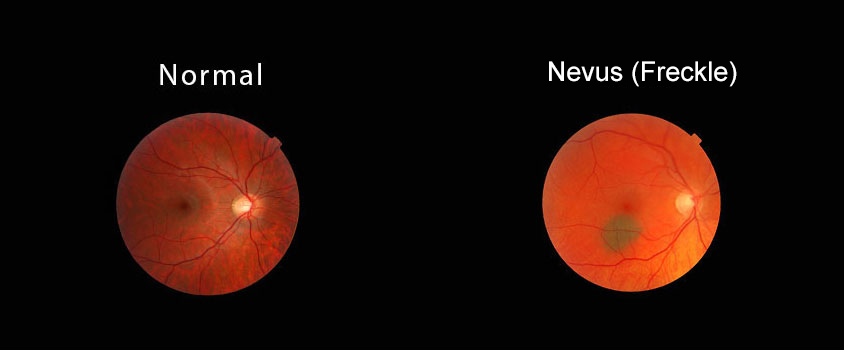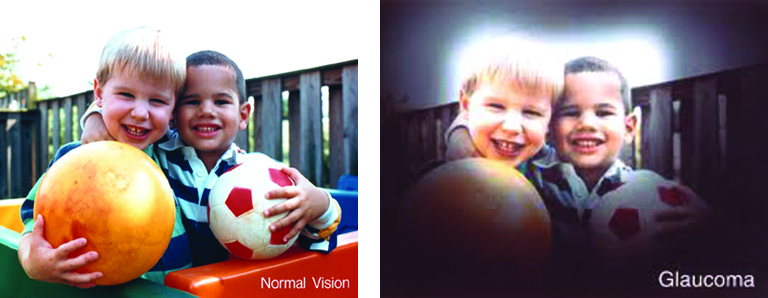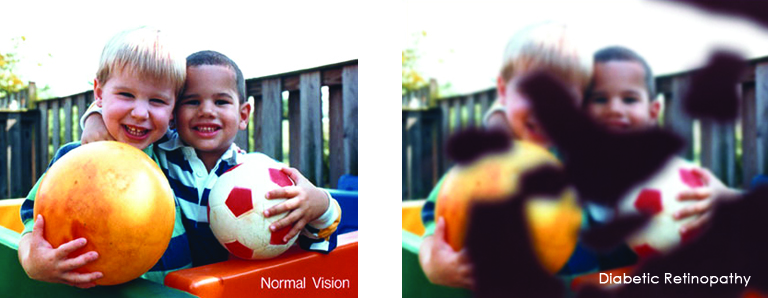Ocular Disease Management
Ocular disease management at Brampton and Mississauga
Many ocular diseases do not show any early symptoms, and while some are treatable, the progression can only be delayed or halted for others. That’s why precise and early detection is vital in managing ocular diseases.
With all of the developments in optometric technology, it’s vital to choose an eye doctor who has the right qualifications and is on top of the latest eye care developments. At our eye clinics in Brampton and Mississauga, we stay up-to-date with the latest technology, information, and techniques to provide you with the best care possible.
What is an ocular disease?

Ocular diseases affect your overall eye health and vision. Even though most ocular diseases affect older adults, young, healthy individuals are also at risk. The best way to treat ocular diseases is with annual eye checkups.
Early detection is critical. At our Brampton and Mississauga eye clinics, we diagnose and treat many of the ocular diseases. We use cutting edge technology to diagnose and manage ocular diseases with great precision.
We have been diagnosing and treating some of the most common ocular diseases in our clinics for years. Amongst them are the following:
Cataracts

Cataracts is a common eye disease affecting older people. It starts with clouds appearing on the eyes’ internal lens. At first, the cataract may only affect a small part of the lens, and you are not likely to notice any vision loss.
As it progresses, the clouding may develop into a small spot that can cover the whole lens. When it happens, the light entering the eye will scatter and the clouded vision can make it more challenging to carry on daily tasks such as to read, drive a car or recognize facial expressions.
Cataracts’ symptoms can include blurry, hazy or dim vision. Sensitivity to light and increased difficulty with vision at night is common too. People often need more lighting for reading and other activities and start noticing halos around lights. Fading or yellowing of colours is also common symptoms.
At first, changing your eyeglasses and using better lighting can be enough to treat the condition. Further cataracts treatmentmayinclude surgery to replace the cataract lens with a new clear acrylic lens.
Macular Degeneration

Macular degeneration is the leading cause of vision loss, and in many cases, can lead to blindness.
This chronic disease deteriorates the macular, which is the part of the retina at the back of the eye, responsible for the fine detail in the central vision. This causes the blood vessels to burst and small blind spots will appear and block the vision.
The disease is more widespread with people over 50. Smoking, damage from sunlight exposure, and family history (common among Caucasians) are also known causes.
The disease usually develops in one eye at first and the healthy eye compensates for the loss of vision. Leaving the disease to progress as it goes unnoticed.
Symptoms can include distorted and blurry vision, and sometimes difficulties adjusting when entering a dark room.
Macular degeneration treatment can include laser therapy and Lucentis or Avastin injections. The treatment depends on the extent of damage and the location of blood in the diseased blood vessels. In other cases, nutritional supplements, and a diet high in antioxidants, lutein, and zinc can help.
Glaucoma

Glaucoma is a slow loss of peripheral vision in people over 60. It is often due to high pressure in the eye that damages the optic nerve at the back of the eye. The progression is so slow it can take decades. In most cases, there are no signs of the disease in its early stages. But if untreated, it can cause blindness.
Glaucoma symptoms can include severe headaches, eye pain, nausea, vomiting, blurry vision, halos around lights, and eye redness.
Vision loss caused by glaucoma can’t be recovered. That’s why early detection through regular eye exams, where the eye pressure is measured is essential. Early diagnosis is the best way to prevent any further vision loss.
Despite no known cure, there are medications such as eye drops to lower the eye pressure and slow down the progression. Surgery and laser treatment can also be an option to stop further vision loss.
Diabetic Eye Disease

Diabetic eye diseases include diabetic retinopathy, cataracts, and glaucoma. These are among the leading causes of blindness in the world.
Diabetic eye disease is caused by high blood sugar that damages the small light-sensitive vessels supplying blood to your retina. The condition can alter the structure of the vessels so they thicken and even close off. The disease usually affects both eyes.
At first, there may be no noticeable symptoms. But as the disease progresses, symptoms may include spots or dark strings floating in your vision, blurred vision, fluctuating vision, impaired colour vision, or dark or empty areas in your vision.
The best treatment is regular monitoring and early diagnosis . Treatment includes lifestyle changes like a healthy diet, exercise, and keeping blood sugar at a low. Medical treatment usually includes managing diabetes. With better control of the disease, fewer eye problems will emerge.
Diagnosis and treatment of ocular disease at Mississauga and Brampton
Our optometrists at Mississauga and Brampton are fully trained to diagnose and treat ocular diseases. With precise routine check-ups we can detect diseases at early stages and form a treatment plan to preserve your vision for as long as possible.
It’s easy to make an appointment to see one of our experienced optometrists.





